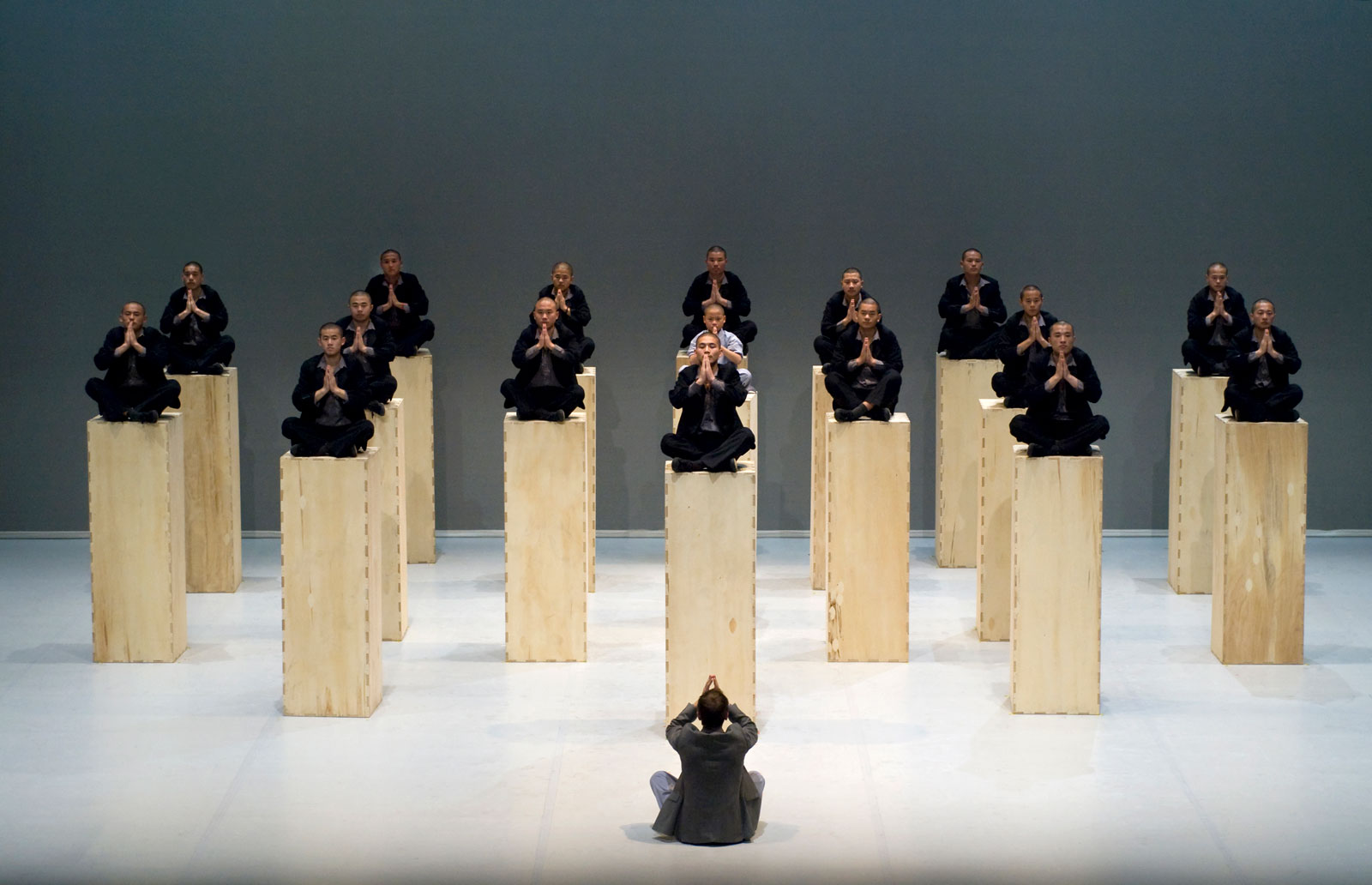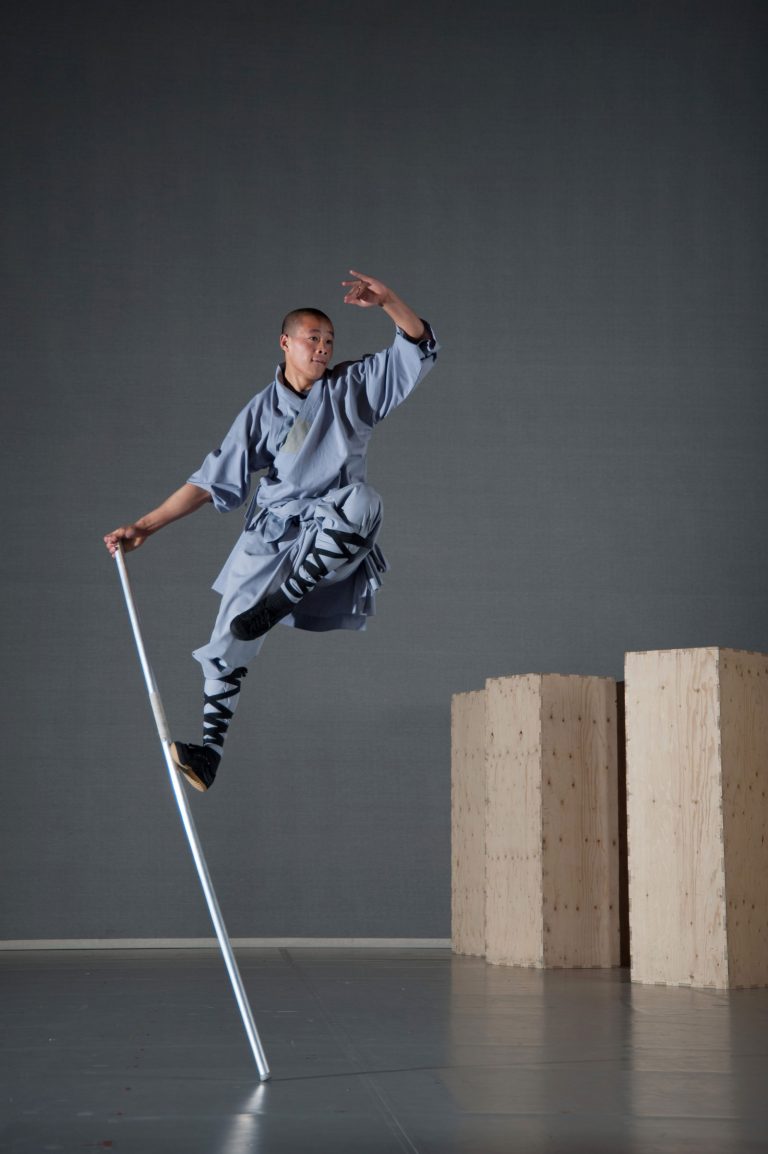What would it look like if New York City Ballet’s corps of ballerinas were replaced by 20 kung fu Buddhist monks? Sutra, from Belgian-Moroccan choreographer Sidi Larbi Cherkaoui, is as close of an answer as you’re likely to get. The hourlong performance, which melds contemporary dance with the fighting techniques of China’s famous Shaolin martial arts, is an impressive display of acrobatics. It is also touching, and often surprisingly humorous.
Onstage, Cherkaoui, 42, joins the Chan Buddhist monks—one of whom can’t be more than seven years old—as well as 20 human-sized boxes, all wooden except for Cherkaoui’s, which is silver. It’s a marker of his outsider status. While Cherkaoui engages with the monks throughout, until the show’s crescendo, he’s set apart from them. You get the sense that the monks are aspirational, always just a bit out of reach or a beat ahead (although Cherkaoui is a gifted dancer as well, and shows us his own skills). It’s a genuine, sweet exploration that will resonate with any spiritual seeker.
Related: Amituofo: Shi Yan Ming
The boxes, conceptualized by British sculptor Antony Gormley, are as much a part of the choreography as the dancers themselves. Dragged around, stacked, put together like a puzzle and broken apart again—these simple props create complex worlds. Sometimes they are a lifeboat or a coffin. Sometimes they are ramparts or doorways. Frequently they’re used as a technique to add levity by hiding the performers before they fly out of their boxes with flips, kicks, and spins.

Sutra premiered a decade ago but remains fresh. In 2007, Cherkaoui began the process of working with the monks, who hail from the original Shaolin Monastery in eastern China. Developed during the Sui and Tang dynasties (581–618 CE and 618–907 CE) to protect the monastery from attack, the unique style of martial arts is now considered a tool for physical and mental cultivation.
At the time of their first meeting with Cherkaoui, the temple’s leaders had been looking for a way to modernize the tradition in a way that honored its spiritual roots. Sutra does this well, ensuring the audience understands that the acrobatics are more than cheap tricks, and by allowing the dancers to embody traditional symbols—a snake, a scorpion, a monkey—while situating them in a context you’d never find in ancient China.
Sutra is part of Lincoln Center’s White Light Festival, a multi-disciplinary festival highlighting “individual contemplation and communal artistic experiences.” October 16–November 18, 2018. Schedule and tickets available here.
Thank you for subscribing to Tricycle! As a nonprofit, we depend on readers like you to keep Buddhist teachings and practices widely available.
